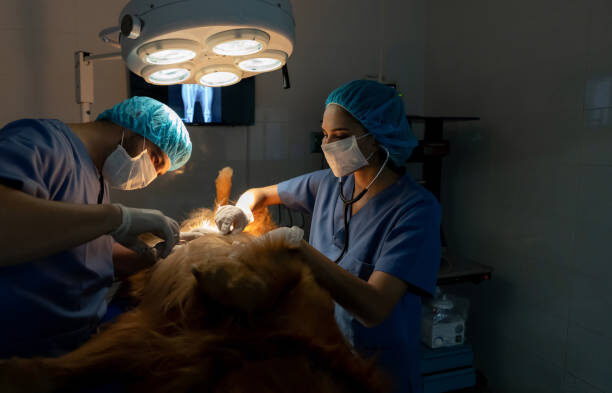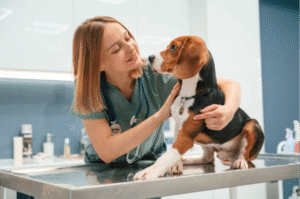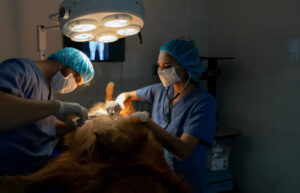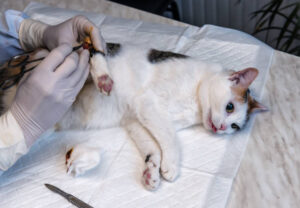If your pet has been recommended for surgery, it’s natural to feel nervous. Whether it’s a mass removal, dental surgery, or orthopedic procedure, understanding the process can ease anxiety. At Happy Tails Animal Hospital, we believe in guiding Renton pet owners through every step of the surgical journey with compassion and clarity.
Understanding the Most Common Pet Surgeries
Understanding the most common pet surgeries helps pet owners prepare for procedures their furry companions might need. Routine surgeries like spaying, neutering, and dental cleanings promote long-term health. Orthopedic surgeries and tumor removals are also frequently performed to address injuries or illnesses. Knowing what to expect can ease anxiety and ensure pets get the best care.
Mass Removal: Why and When It’s Needed
Lumps or bumps are common in pets, especially as they age. Some are benign, but others may need removal for biopsy or treatment. Early intervention is key to preventing complications. Mass removal surgery is typically performed when a growth changes in size or color, starts to bleed, or causes discomfort. Pathology results post-removal provide insights into the nature of the mass.
Dental Surgery: More Than Just Clean Teeth
Dental disease affects many pets, leading to pain and infection. Extractions or deep cleanings under anesthesia can significantly improve your pet’s health and quality of life. Infections in the mouth can travel through the bloodstream and affect internal organs, so dental health is crucial. Common dental surgeries include root canals, gingival flap procedures, and full mouth extractions in severe cases.
Orthopedic Procedures: Helping Pets Move Better
Injuries, arthritis, or congenital issues may require orthopedic surgeries like ACL repair or hip correction. These surgeries restore mobility and reduce chronic pain. Cruciate ligament surgery and patellar luxation correction are common in dogs, while hip dysplasia surgeries help larger breeds live more comfortably.
What to Expect Before Surgery
Before surgery, you can expect to have a detailed consultation with your doctor, including medical evaluations and preoperative tests. You’ll receive instructions about fasting, medications, and what to bring on the day of surgery. It’s normal to feel a mix of nerves and questions—your healthcare team will guide you through every step. Clear communication and preparation help ensure a smooth surgical experience.
Initial Consultation and Diagnosis
Your vet will perform a full exam, bloodwork, and imaging (if needed) to confirm the diagnosis and recommend treatment. This is your time to ask questions and express concerns. Your veterinarian will also evaluate if your pet is healthy enough to undergo anesthesia and surgery.
Pre-Surgical Instructions for Pet Owners
You’ll receive instructions like fasting before surgery, stopping certain medications, or preparing a recovery area at home. Following these guidelines helps ensure a smooth procedure. You may also be asked to withhold food for 8-12 hours, restrict water intake, or bring in medications for pre-op review.
Understanding Anesthesia and Its Safety
Modern anesthesia is very safe when administered by trained professionals. At Happy Tails Animal Hospital, we follow strict protocols, monitor vital signs, and tailor anesthesia to your pet’s needs. We use advanced monitoring tools and pre-anesthetic bloodwork to identify any risks and mitigate them.
During the Surgical Procedure
During the surgical procedure, the medical team works with precision to perform the necessary intervention while maintaining strict sterility. Surgeons carefully follow planned steps, using specialized instruments to address the medical condition. Anesthesiologists continuously monitor the patient’s vital signs to ensure stability throughout the operation. The goal is to achieve the best outcome with minimal risk and complications.
The Role of the Veterinary Surgical Team
From pre-op to post-op, a team of veterinarians and technicians are focused on your pet’s safety. Each team member has a defined role in monitoring, assisting, and ensuring sterile conditions. Surgical nurses, anesthesiologists, and post-op caregivers all collaborate to ensure smooth execution.
Anesthesia Monitoring and Safety Protocols
Vital signs such as heart rate, oxygen levels, and temperature are closely watched throughout the procedure. Advanced equipment provides real-time updates to guide adjustments. Anesthetic agents are carefully dosed to minimize risks, especially in geriatric or high-risk patients.
How Long Do Pet Surgeries Typically Take?
Time varies based on procedure type. A dental extraction might take under an hour, while orthopedic surgery could last several hours. Your vet will give you an estimate. Recovery and monitoring post-op is equally important, and your pet won’t be discharged until they’re stable.
Post-Surgery Recovery: At the Clinic and at Home
After surgery, initial recovery takes place at the clinic where medical staff monitor vital signs, manage pain, and prevent complications. Once stable, patients transition home to continue healing with rest, prescribed medications, and follow-up care. Proper wound care, hydration, and gentle movement aid recovery. Regular check-ins with healthcare providers ensure smooth progress and early detection of any issues.
Immediate Post-Operative Care at the Hospital
Pets are monitored as they wake from anesthesia. Pain relief is administered, and vitals are checked regularly. Some pets may stay for a few hours or overnight. Warm blankets, IV fluids, and quiet recovery rooms help pets wake comfortably and safely.
Home Recovery: Do’s and Don’ts
- Keep your pet calm and confined
- Follow medication schedules exactly
- Avoid bathing or getting the incision wet
- Prevent licking or scratching the surgery site (use cones if needed)
- Watch for signs of discomfort or infection
- Minimize jumping or playing
- Keep your vet informed of any changes
Managing Pain and Medication
Pain management is crucial. Your vet will prescribe pain relievers and possibly antibiotics. Give all medications as instructed and never self-medicate with human drugs. If you notice excessive drooling, whimpering, or refusal to eat, contact your vet immediately.
Supporting Your Pet’s Emotional Recovery
Pets can feel stressed after surgery. Create a quiet, comfortable space where they can rest. Use calming tools like pheromone diffusers, soft bedding, and gentle petting. Reassure them with your presence but avoid overstimulation.
Nutrition and Hydration Post-Surgery
Offer small, bland meals if your pet’s appetite is low. Chicken, rice, or vet-prescribed recovery diets work best. Fresh water should always be available. If your pet refuses to eat or drink within 24 hours, consult your vet.
When to Contact Your Veterinarian
Recognizing Signs of Complications
Call your vet if you notice:
- Swelling or discharge at the incision site
- Vomiting or diarrhea
- Lethargy beyond the first 24 hours
- Loss of appetite
- Difficulty breathing or walking
- Excessive whining or restlessness
Post-Surgical Checkups and Follow-Up Care
Follow-up visits ensure proper healing. Your vet may remove sutures or adjust medications. These check-ins are also a chance to address any concerns. In complex cases, multiple follow-ups or rehab therapy may be required.
Why Choose a Local Vet for Pet Surgery in Renton
Choosing a local vet in Renton for your pet’s surgery ensures personalized, attentive care from professionals who understand your community’s needs. Local clinics offer easier access for follow-up visits and emergencies. You’ll also build a trusting relationship with a team familiar with your pet’s history. Supporting local vets strengthens your community’s pet care services.
Personalized Care and Familiar Faces
Your pet is more than a number. A local clinic offers continuity of care from people you know and trust. Familiar surroundings can also reduce your pet’s anxiety. Whether it’s routine check-ups or more specialized procedures, our animal surgery clinic ensures your pet gets the care they deserve.
Advanced Surgical Facilities at Happy Tails Animal Hospital
We’re equipped with state-of-the-art surgical tools and technology. From mass removal to complex orthopedic work, your pet is in skilled hands. Our team also stays current with the latest surgical techniques and pain management protocols.
Supportive Recovery Plans Tailored to Each Pet
No two pets are alike. We create customized surgical recovery plans based on your pet’s age, condition, and personality. We also provide detailed take-home instructions and post-op support.
What Type of Surgery Is Right for Your Pet?
Choosing the right surgery for your pet depends on their specific health needs, age, and overall condition. Common procedures include spaying/neutering, dental surgery, lump removal, and orthopedic surgeries. Your veterinarian will recommend the most suitable option after a thorough examination and diagnostic tests. Always discuss risks, benefits, and recovery plans before proceeding.
| Surgery Type | Common Reasons | Average Recovery Time |
| Mass Removal | Lumps, tumors, cysts | 7-14 days |
| Dental Surgery | Tooth decay, gum disease | 3-10 days |
| Orthopedic Surgery | Ligament tears, hip dysplasia | 6-12 weeks |
| Spay/Neuter | Birth control, behavioral management | 7-10 days |
| Emergency Surgery | Internal bleeding, blockage, trauma | Varies |
Final Thoughts: Ensuring a Safe and Smooth Pet Surgery Experience
Facing pet surgery can feel overwhelming, but understanding the process helps ease fears. Choosing a trusted, local team ensures your furry companion gets expert surgical care before, during, and after the procedure. From mass removals to orthopedic repairs, we’re here to support you every step of the way.
To learn more about our surgical services or to schedule a consultation, visit our surgery services page.
FAQs
Q. Is anesthesia safe for older pets?
A. Yes. With modern monitoring and pre-surgical screening, anesthesia is safe for most senior pets. Your vet will evaluate your pet’s health to minimize risks.
Q. How long should I keep my pet indoors after surgery?
A. At least 7-14 days depending on the surgery. Follow your vet’s recommendations for restricted activity and leash walking.
Q. What are signs of infection after pet surgery?
A. Look for redness, swelling, discharge, or an unpleasant odor around the incision. Contact your vet immediately if you observe these symptoms.
Q. Can I feed my pet before surgery?
A. Usually not. Most pets must fast for 8-12 hours before surgery to reduce anesthesia risks. Your vet will provide specific instructions.
Q. Does pet insurance cover surgery costs?
A. Many policies do cover surgical procedures, especially if they’re not pre-existing conditions. Check with your provider to confirm your coverage.

